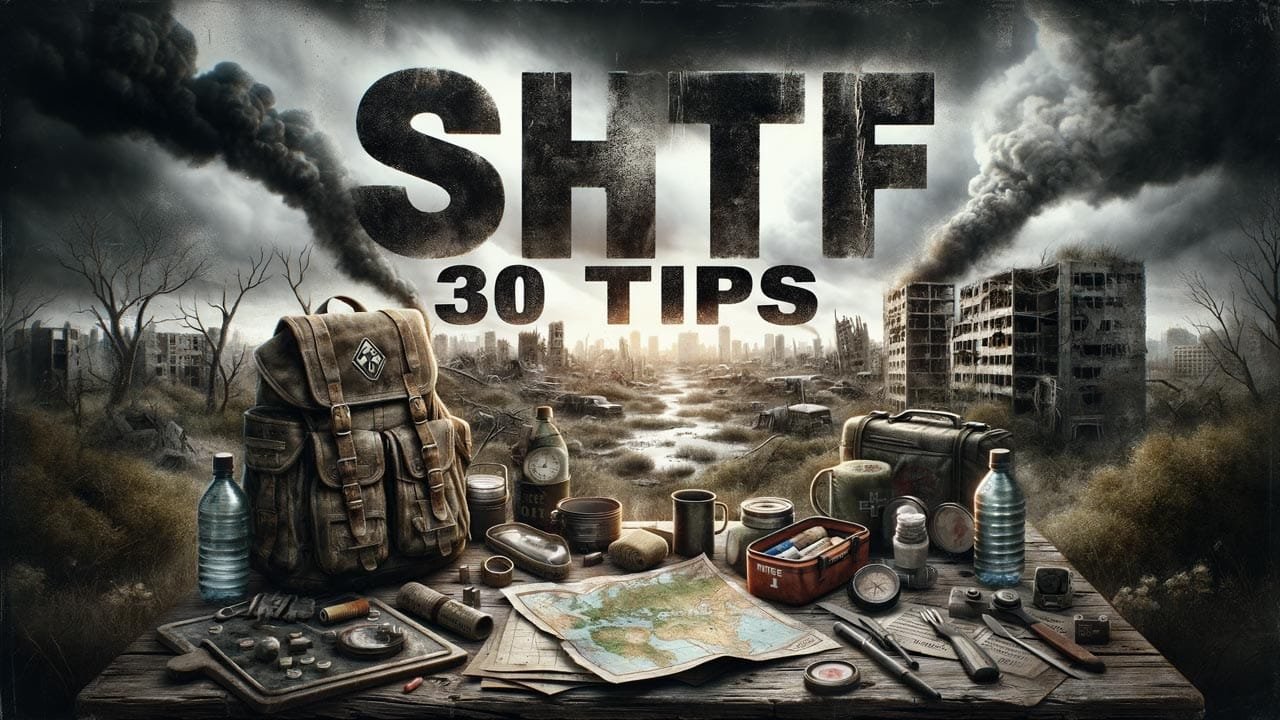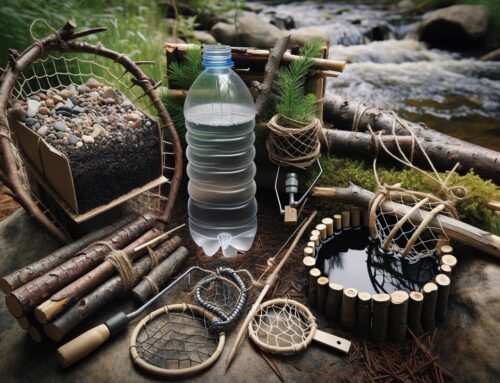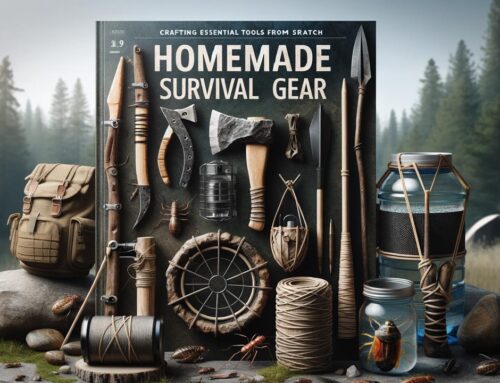SHTF 30 TIPs for the aftermath…
First “What is SHTF”?
“SHTF” is an acronym that stands for “Shit Hits The Fan.” It’s a colloquial term often used in survivalist and prepper communities to describe a situation where a major disaster or series of disasters causes significant disruption to society and normal life. This disruption could be so severe that the usual social, legal, and economic systems no longer function effectively, if at all. Here are some key points about SHTF scenarios:

Types of SHTF Scenarios
- Natural Disasters: Earthquakes, hurricanes, tsunamis, volcanic eruptions, and severe weather events.
- Economic Collapse: Severe economic downturns, hyperinflation, or the collapse of financial systems.
- Pandemics: Widespread outbreaks of deadly diseases.
- Political and Social Unrest: Revolutions, civil wars, or widespread rioting and looting.
- Technological or Environmental Catastrophes: Nuclear accidents, significant cyberattacks, or ecological disasters.
Characteristics
- Widespread Impact: Affects large geographic areas and a significant portion of the population.
- Breakdown of Services: Disruption to utilities (electricity, water), communication systems, supply chains, and emergency services.
- Social Disorder: Potential for increased crime, looting, and breakdown of social norms.
Preparation and Response
- Survival Skills: Basic skills such as first aid, food preparation, and self-defense become vital.
- Resource Management: Storing and managing essentials like food, water, and medical supplies.
- Self-Sufficiency: Growing your own food, generating your own power, and being able to live off-grid.
- Community Building: Forming or joining groups for mutual support and protection.
Mental and Emotional Aspects
- Resilience and Adaptability: Being mentally prepared to face challenging and unpredictable situations.
- Stress Management: Dealing with the psychological impact of drastic changes and potential isolation.
Critique and Realism
- Varying Severity: Not all SHTF scenarios are extreme or apocalyptic; some might be temporary disruptions or regional crises.
- Preparation vs. Paranoia: It’s important to balance preparedness with a realistic assessment of risks and not to let fear dominate one’s life.
In summary, SHTF refers to extreme circumstances where the normal functioning of society is severely disrupted, requiring individuals and communities to rely on self-sufficiency, survival skills, and adaptability to navigate the challenges posed by such scenarios.
now let’s at those TIPs…
Important mindset to consider after SHTF
Currently Watching reruns of “The Walking Dead” which I feel is a somewhat accurate rendition of a post SHTF world…
Surviving and thriving after a SHTF (Shit Hits The Fan) scenario requires not just practical skills and resources, but also a resilient and adaptable mindset. Here are some key mental attitudes and perspectives to consider:
1. Adaptability:
- Conditions and situations can change rapidly in a post-disaster world. The ability to adapt to new challenges, whether they are environmental, societal, or personal, is crucial. This means being open to learning new skills, changing plans, and adjusting to a new normal.
2. Resilience:
- Mental and emotional resilience is essential. This includes the ability to cope with stress, loss, and trauma. Building resilience can involve practicing mindfulness, maintaining a positive outlook, and finding sources of hope and motivation.
3. Resourcefulness:
- In a world where resources may be scarce, being resourceful becomes a vital skill. This means being able to use what is available in innovative ways, repurposing items, and finding solutions to problems with limited materials.
4. Community Orientation:
- The importance of community and teamwork cannot be overstated. Building relationships, working collaboratively, and supporting each other are key to survival and rebuilding. It’s about understanding that individual survival is strongly linked to the well-being of the community.
5. Situational Awareness:
- Being aware of your surroundings and understanding the dynamics of the new environment is crucial. This involves staying informed, understanding potential threats and opportunities, and being able to make quick, informed decisions.
6. Long-Term Planning:
- While immediate survival is paramount, thinking ahead is also important. This includes planning for food sustainability, shelter, security, and even community rebuilding and governance.
7. Self-Sufficiency:
- Developing skills to be as self-sufficient as possible reduces dependence on external sources. This includes skills in food production, water sourcing, shelter building, and basic healthcare.
8. Mental Fortitude:
- The ability to stay calm, focused, and decisive in high-stress situations is vital. Practicing stress management techniques and maintaining a level head can make a significant difference in survival scenarios.
9. Empathy and Compassion:
- Maintaining empathy and compassion is important for mental health and social cohesion. Helping others, understanding different perspectives, and working towards the common good can create a more sustainable and livable post-SHTF environment.
10. Continuous Learning:
- In a world that has drastically changed, the willingness to continuously learn and adapt is critical. This could involve acquiring new survival skills, learning about new technologies or methods, and staying open to new ideas.
The mindsets noted here are not only crucial for survival in extreme scenarios but are also valuable in everyday life, fostering resilience, adaptability, and a sense of community.
Personnel Grouping to enhance protection and knowledge
Be careful, you may end up allowing a bad seed into your group and pay a heavy price for that…
In a post-SHTF (Shit Hits The Fan) scenario, where traditional structures and systems may have collapsed, forming effective personnel groupings is essential for enhancing protection, knowledge sharing, and overall survival. Here’s an expanded view on how to approach this:
11. Diverse Skill Sets
- Rationale: A group with a wide range of skills can handle various challenges more effectively.
- Implementation: Recruit individuals with different backgrounds, such as medical professionals, farmers, mechanics, carpenters, and former military or law enforcement personnel.
- Benefits: This diversity ensures that the group can address medical emergencies, repair equipment, grow food, build structures, and provide security.
12. Team Leadership and Structure
- Rationale: Clear leadership and structure prevent chaos and ensure coordinated efforts.
- Implementation: Establish a leadership hierarchy or a council-like structure where decisions are made democratically.
- Benefits: Ensures efficient decision-making, dispute resolution, and effective delegation of tasks.
13. Regular Training and Education
- Rationale: Continuous learning and practice enhance skills and preparedness.
- Implementation: Organize regular training sessions where members teach each other their skills.
- Benefits: Helps in cross-skilling, ensuring redundancy in critical skills, and keeping everyone engaged and prepared.
14. Security and Defense
- Rationale: Protection against potential threats is crucial for survival.
- Implementation: Form a security team skilled in self-defense, tactical planning, and weapons handling.
- Benefits: Provides safety and deters potential threats from both humans and wildlife.
15. Medical and Health Group
- Rationale: Maintaining health is crucial in post-disaster scenarios.
- Implementation: Have a dedicated team for medical care, including trained healthcare professionals and those with first aid knowledge.
- Benefits: Ensures quick medical response and ongoing health monitoring.
16. Food Production and Foraging
- Rationale: Sustainable food sources are vital for long-term survival.
- Implementation: Form agricultural and foraging teams knowledgeable in farming, hunting, and gathering.
- Benefits: Provides a steady food supply and reduces dependence on stored supplies.
17. Resource Management
- Rationale: Efficient use of resources ensures sustainability.
- Implementation: Assign a team to manage resources like water, fuel, and food supplies.
- Benefits: Prevents waste, promotes conservation, and ensures equitable distribution.
18. Communication and Information Gathering
- Rationale: Staying informed about the outside world is crucial.
- Implementation: Establish a communication team skilled in using radios, signals, and other forms of communication.
- Benefits: Helps in gathering information, coordinating with external groups, and staying updated on potential hazards.
19. Childcare and Education
- Rationale: Children’s care and education are crucial for the future.
- Implementation: Set up a team responsible for teaching and caring for children.
- Benefits: Ensures the well-being and education of the next generation, maintaining a sense of normalcy and hope.
20. Mental Health and Morale
- Rationale: Psychological well-being is as important as physical health.
- Implementation: Include individuals skilled in counseling or with a knack for boosting morale.
- Benefits: Helps in coping with stress, trauma, and maintaining a positive group dynamic.
By strategically grouping personnel based on their skills, knowledge, and roles, a post-SHTF community can enhance its protection, resilience, and sustainability. This approach not only addresses immediate survival needs but also lays the foundation for rebuilding a stable and thriving community.

Scavenging for useful items
Medicine, Eye glass- remove glass from frames and use as a magnifying glass- use the sun to start fires, batteries and small light bulbs- use to start a fire…
Scavenging for useful items in a post-SHTF (Shit Hits The Fan) scenario is a critical skill for survival, especially when traditional supply chains are disrupted or non-existent. Expanding on this, here are key aspects to consider:
21. Safety First
- Precautions: Wear protective gear (gloves, sturdy footwear, masks) to avoid injury and infection.
- Risk Assessment: Evaluate the safety of a location before entering. Beware of unstable structures, hazardous materials, and potential threats like other scavengers or wildlife.
22. Identifying Valuable Resources
- Prioritizing Needs: Focus on essentials like water, food, medical supplies, and shelter materials.
- Versatile Items: Look for multi-use items like tools, duct tape, clothing, and cooking utensils.
23. Efficient Scavenging Techniques
- Planning: Map out potential scavenging locations and plan routes for efficiency and safety.
- Systematic Search: Conduct thorough searches in each location, checking all possible hiding spots.
24. Resource Locations
- Retail Stores: Likely to be picked over quickly, but can still yield supplies.
- Homes and Apartments: Potential sources of clothing, tools, and personal care items.
- Industrial Areas: May have tools, materials, and machinery.
- Hospitals and Pharmacies: For medical supplies, but high-risk due to demand and potential disease exposure.
- Farms and Rural Areas: Possible sources of food, water, and agricultural tools.
25. Transportation of Goods
- Using Carts or Bags: Utilize backpacks, shopping carts, or makeshift sleds to transport items.
- Consolidation: Prioritize and consolidate items to maximize transport efficiency.
26. Avoiding Conflict
- Stealth: Move quietly and avoid drawing attention.
- Timing: Scavenge during less busy times to avoid encounters with others.
- Negotiation Skills: Be prepared to negotiate or barter if you encounter others.
27. Sustainability and Ethics
- Responsible Scavenging: Take only what you need to avoid waste.
- Respect for Property: While survival is paramount, consider the ethical implications of scavenging private property.
28. Repair and Repurpose
- Creative Reuse: Look for ways to repair or repurpose items to extend their usefulness.
- Upcycling Skills: Develop skills in modifying and adapting found items for new uses.
29. Inventory Management
- Tracking Supplies: Keep a record of what you have and what you need.
- Organized Storage: Store items methodically for easy access and preservation.
30. Health and Hygiene
- Sanitation: Clean all items, especially containers and cooking utensils.
- Avoiding Contamination: Be cautious with perishable goods and items that may be contaminated.
Effective scavenging involves more than just searching for items; it requires planning, knowledge of valuable resources, safety precautions, and ethical considerations. It’s a vital skill in a post-disaster world, aiding in survival and potentially improving the quality of life under challenging circumstances.







Leave A Comment